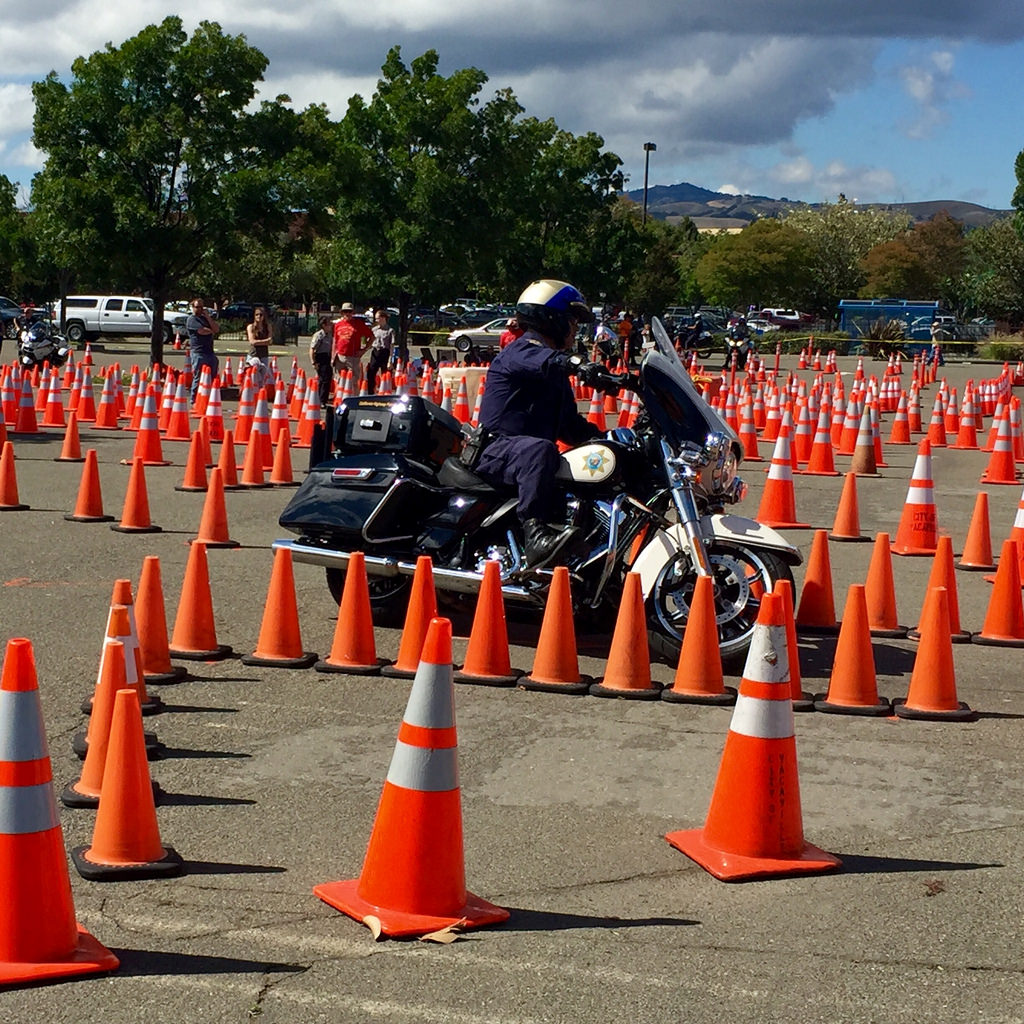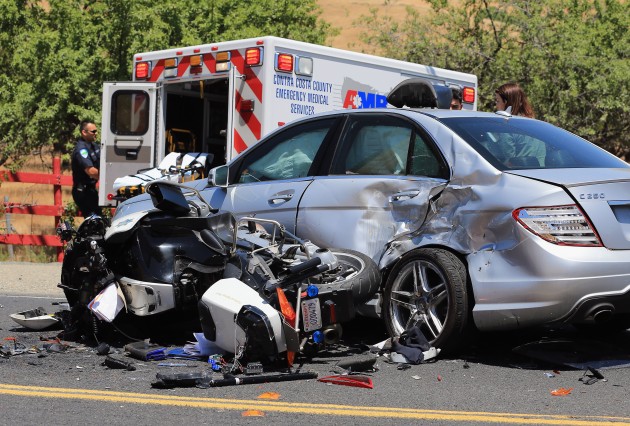April showers bring May flowers. May sunshine brings motorcycles. Therefore, May is Motorcycle Awareness Month. In celebration of those who have been riding a motorbike for years and in concern for the safety of first timers, The Michigan Law Firm, PLLC would like to address the importance of motorcycle safety.
Motorcycle safety is a very serious concern. The National Highway and Traffic Safety Administration (NHTSA) states that motorcycle riders are 27 times more likely than other motorists to die in car crashes and 6 times as likely to be injured. For motorcyclists who are 60 years of age or older, the risk of serious injuries and death increase exponentially due to physical factors such as brittle bones, slower reflexes, and poor eyesight. Bearing this in mind, here are some important tips that could benefit riders who take their bikes for a spin over the next few months.
Motorcycle Safety Tips
How To Obtain A Motorcycle Endorsement
Along with a traditional automobile driver's license, motorcyclists mush obtain a state regulated motorcycle license endorsement, in order to legally operate a motorcycle. To gain this endorsement, people who are interested in driving motorcycles should invest in a motorcycle education course. As with basic driver’s education classes, bikers should make sure they are properly informed and instructed on their state's biker laws and how to properly ride a motorcycle.
Michigan motorcyclists have two ways that they can obtain a cycle endorsement on their license. One way is by taking a basic rider or returning rider course from an approved Secretary of State (SOS) training facility and instructor. Once the course is completed, the rider will receive a certificate of completion from the sponsor that they should then take to be submitted at a SOS branch. From there, a vision test is administered and if the rider passes, they must pay a small fee of $13.50 to obtain their motorcycle endorsement.
The second option is to go directly to an SOS branch and take the vision and written test, whereupon successful completion, the purchase of a temporary instruction permit is needed. In obtaining the temporary license, bikers are instructed to clock 180 days worth of driving time with a currently endorsed motorcyclist, before they can take the road test. Then, only if the rider passes the road test will they receive a completion certificate to take to the SOS where they are then obligated to pay an additional $9.00 for their motorcycle permit.
How To Purchase A Safe(r) Motorcycle
Many people admit that the main thing they look for when purchasing a bike is speed and aesthetic appeal, right? Well, motorcycles are more than a beautiful and powerful machine to use on the road. They should also be safe, seeing as they offer much less protection than a car, when involved in a motor vehicle accident. First and foremost, riders should not even consider purchasing a bike they cannot handle. Is it too powerful? Too fast? Is the rider able to touch the ground when seated on the bike? Those are all valid questions to ask when purchasing a bike. Other important items to add to the checklist are:
Motorcycle Safety Feature Checklist
Source: Giphy, The Hangover
Make sure handlebars and other controls are easy to reach.
Is it easy to mount and dismount the bike?
Check the pressure and tread of the tires.
Make sure headlights and other indicators are working properly.
Make sure fluid levels are adequate.
Are the hand and foot brakes in working order and easy to grip?
After purchasing the bike, it's important to check for leaks, working brakes, traffic indicators, mirrors and tire pressure every time, before taking the bike for a spin. Making sure the motorcycle is well maintained will not prevent a car crash every time, but it could help reduce the the likelihood of involvement in a crash and/or limit the damage incurred in an accident.
Don't Forget Your Helmet
One look at a bike and it becomes glaringly obvious that it provides less protection than a car or a SUV. Without a top or sides, it's the opposite of a sturdier metal box car or truck. Although every state, including Michigan, does not require riders to have one, helmets are a biker's best friend. According to the NHTSA, "58% of motorcyclists killed in 2015 were not wearing helmets, as compared to 8% in states with universal helmet laws." That is a big difference in the lives that may have been saved if the biker was just wearing a helmet.
The best place to start when looking for a motorcycle helmet, is by looking for helmets that have the Department of Transportation (DOT) sticker of approval. They are usually no more than 3 pounds heavy, have thick interior lining, and come with a face shield that acts as a line of defense for the eyes. After securing a helmet which protects, arguably the most important part of a biker, the brain, it's time to start purchasing items that can protect the rest of the body. The body is essential to shield from the elements of the road or weather, when riding a motorcycle.
Motorcycle Safety Gear and Clothing
A heavy leather, denim, or long sleeve jacket or shirt are clothing items that may protect the rider's arms.
Full fingered gloves aide the riders grip.
Eye gear such goggles or glasses are imperative.
Durable and heavy duty pants that completely cover the legs are a good idea.
Boots, especially ones that cover the ankle and have a hard or thick sole, will help protect the riders feet.
Bright and/or reflective gear is recommended, especially for night rides.
Pack or wear appropriate weather climate gear in case of driving long distances or as the weather forecast permits it.
And yes, even during the summer time, thick and padded gear is expected to be worn to be as safe as possible.
Passenger Motorcycle Safety Tips
For riders who are carrying extra cargo, balance is key. It is important that passengers mount the bike only after it is turned on. Then, both riders should adjust seating arrangements to where the passenger and the rider are both comfortably seated on the bike. Passengers should sit as close to the rider as possible to prevent throwing the bike out of equilibrium. Wrapping their arms around the rider's waist or hips, while keeping both feet planted on the foot pegs at ALL times, is highly advised to all passengers-even when the bike has stopped.
Motorcycle drivers should explain the importance of avoiding touching the muffler to the passenger, because it gets extremely hot and can cause severe burns. Passengers should also keep their movements to a minimum unless they are leaning at the same time and direction as the rider, in order to keep the bike balanced. Another precaution is that passengers should only dismount once the driver says so, to avoid them from accidentally tipping the bike or losing their grip while driving or parking the bike.
Driving A Motorcycle Safely
Riders of motorcycles are held under many of the same laws and expectations as any other motor vehicle operator. For instance, distracted driving, drowsy driving or falling asleep behind the wheel, and operating a vehicle while under the influence of drugs and/or alcohol are all serious driving offenses that can be punishable under law. Therefore, abiding by simple traffic laws, driving carefully during bad weather, always remaining vigilant and aware of the road, avoiding road hazards, and making sure to be as visible as possible to other vehicles, are all safe driving habits that bikers should utilize everyday. Some additional defensive driving tips the DMV.org list riders to use are:
Motorcycle Defensive Driving Tips
Be courteous to cars, trucks, bicycles, pedestrians, and any others who share the road with bikers.
Bikers should keep a car length worth of space between themselves and the vehicle in front of them.
When looking back, to the side, or over the handlebars, it is best to do so by looking above or over the shoulder, and not below or under the arm.
Be assertive. Bikers who hesitate can cause other drivers to react nervously due to them expecting the motorcycle to make unexpected driving maneuvers.
Don't be afraid to use a car as a shield when on the road. An example from the Road Guardians is for motorcyclists to remain close to a vehicle to avoid being hit by left-turning traffic from the opposing direction, when passing through stoplights.
Avoid riding aggressively. This includes changing lanes without a turn signal, aggressively swerving around traffic, and slamming on the brakes-all of which are behaviors that can cause a collision.
Since their choice of vehicle offers less protection than other modes of transportation, bikers must be twice as careful when hitting the road.Considering that motorcyclists are more likely to die in a fatal car crash than the occupants of a car, these tips, though they are not 100% effective in preventing motor vehicle accidents, could potentially decrease the number of fatalities and accidents that occur every year.
With proper training, gear, a well-maintained motorcycle, and the above tips in mind, bikers should be ready to safely hit the road. Of course, no amount of safety tips can ever prevent a motor vehicle accident. Driving is a dangerous an unpredictable action. If you or someone you know has been involved in a motorcycle accident, call The Michigan Law Firm, PLLC. Our consultations are free and our firm is knowledgeable on Michigan motorcycle laws. We help victims of motorcycle injuries identify and obtain any benefits they may be entitled to under Michigan law. Call us today, at 844.4MI.FIRM.






